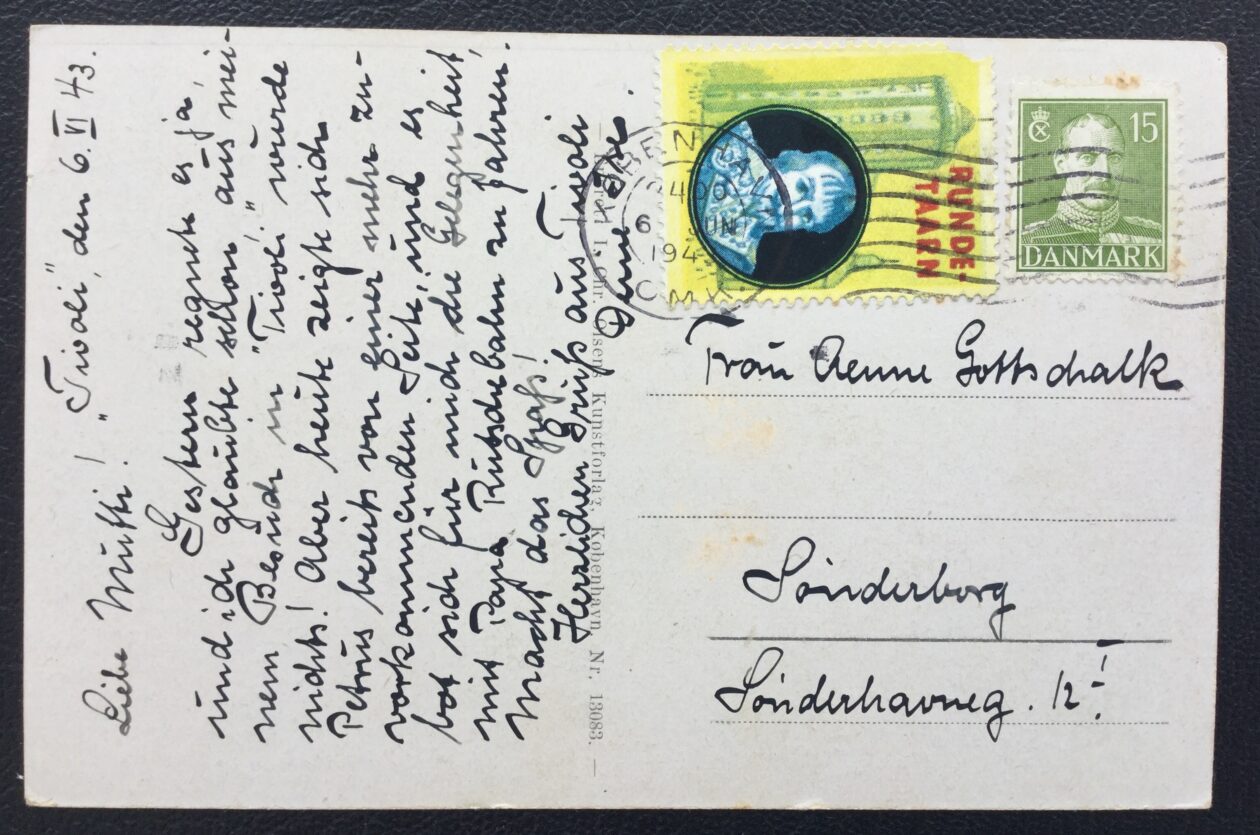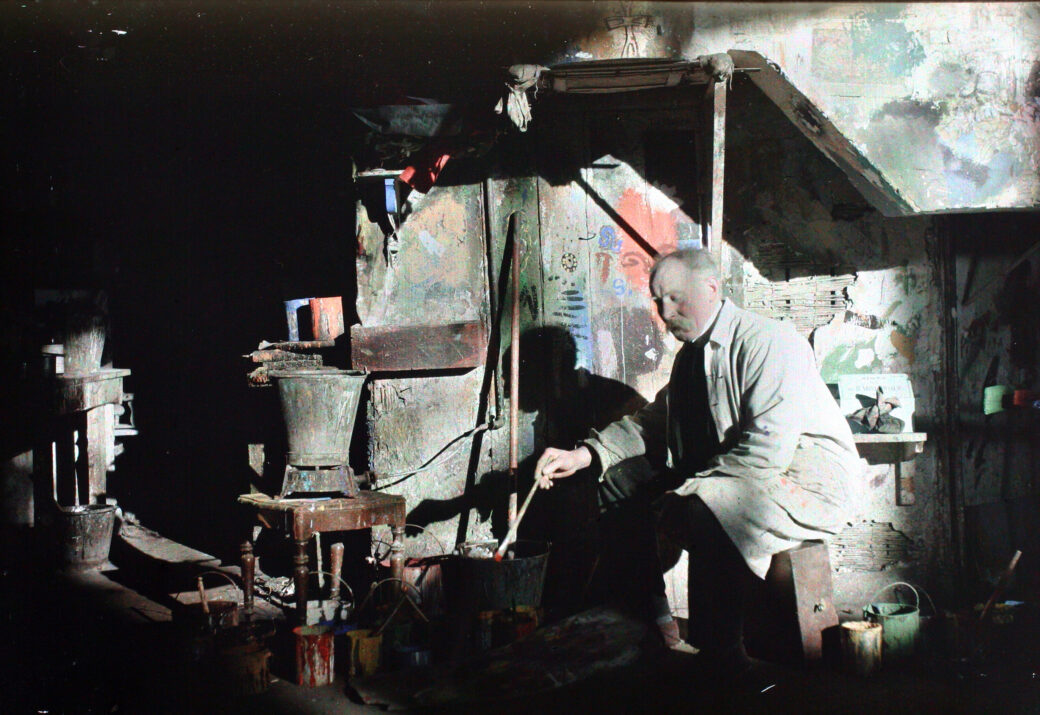This website uses cookies so that we can provide you with the best user experience possible. Cookie information is stored in your browser and performs functions such as recognising you when you return to our website and helping our team to understand which sections of the website you find most interesting and useful.
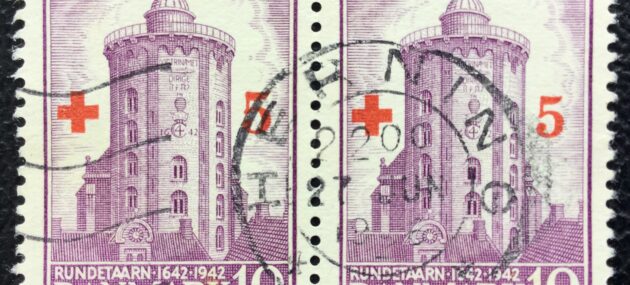
The Round Tower Bomb
As it was King Christian IV who founded the Danish postal service, it seems rather natural that the Round Tower, which was also built on his initiative, should appear on a postage stamp. It did take a good while, however, from when the postal service was founded in 1624 until the Round Tower was actually depicted on a stamp.
This was mainly due to the fact that for the first few hundred years of its life, the postal service did not use stamps at all. The first Danish postage stamp was introduced in 1851 but it shows no Round Tower since it is part of a so-called definitive series, where the sole purpose of the small piece of paper is to simply indicate value.
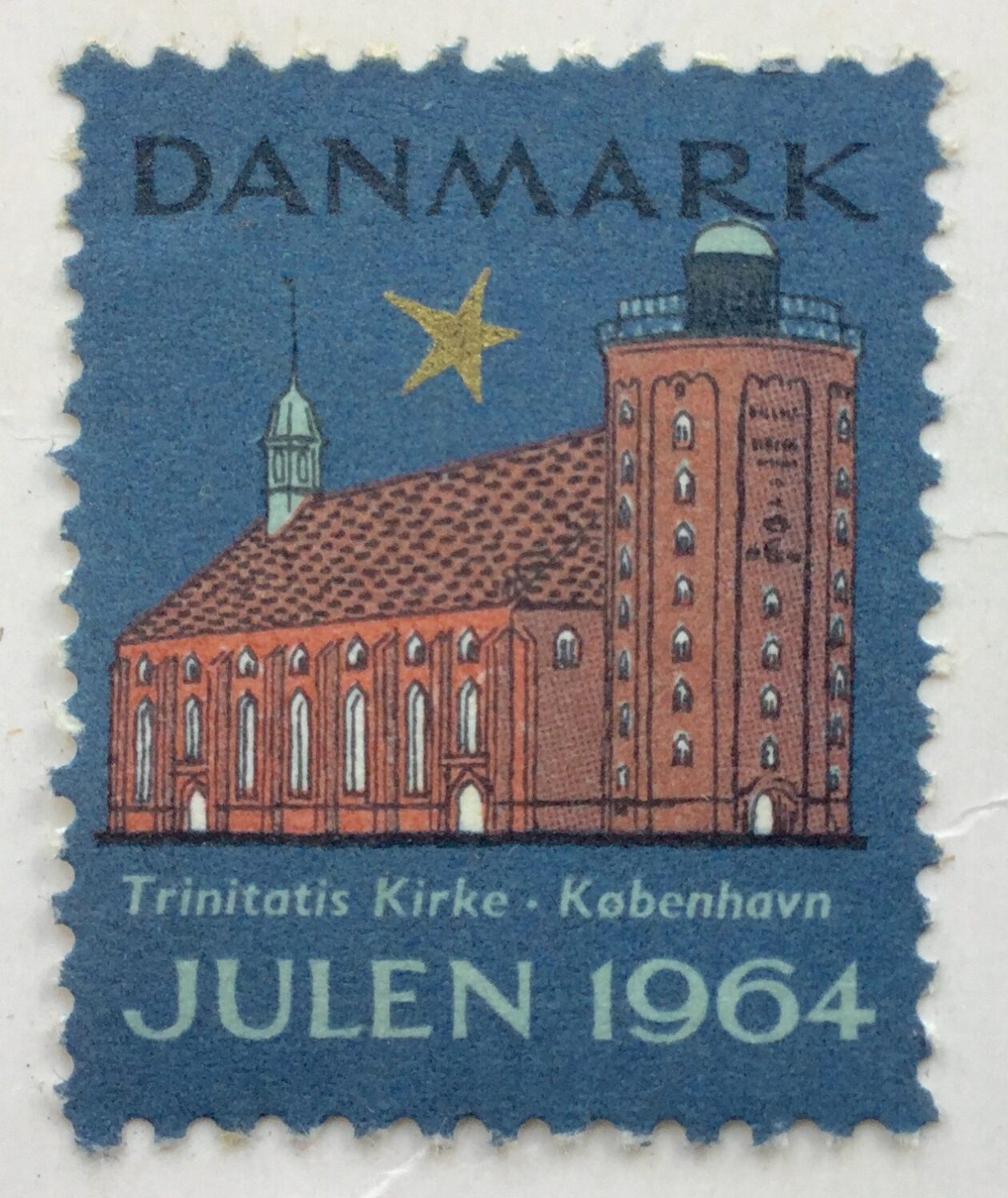
Not Even the Shadow of the Round Tower
It was not until many years later that postage stamps began to be issued on special occasions. It is a stamp from 1912 that is considered to be the first commemorative stamp in Denmark. This stamp was issued on the occasion of the inauguration of the Copenhagen Central Post Building, which is sited next to Copenhagen Central Station. The new building replaced the old Royal Mail House that was located on the street of Købmagergade – only a few hundred steps from the Round Tower.
“Philatelists long for rarities”
Thus, not even the shadow of the tower appeared on the commemorative stamp from 1912, and the absence of it is not unique. Even though few buildings in Copenhagen are as iconic as the Round Tower, it has managed to avoid being depicted on several occasions. For instance, none of the four stamps that were issued in 1967 to mark the 800th anniversary of Copenhagen’s founding, or any of the stamps in the regional series from 1976 with motifs of Copenhagen depicted the Round Tower. However, a stamp worth 80 øre from the latter series did at least portray the view from the tower.
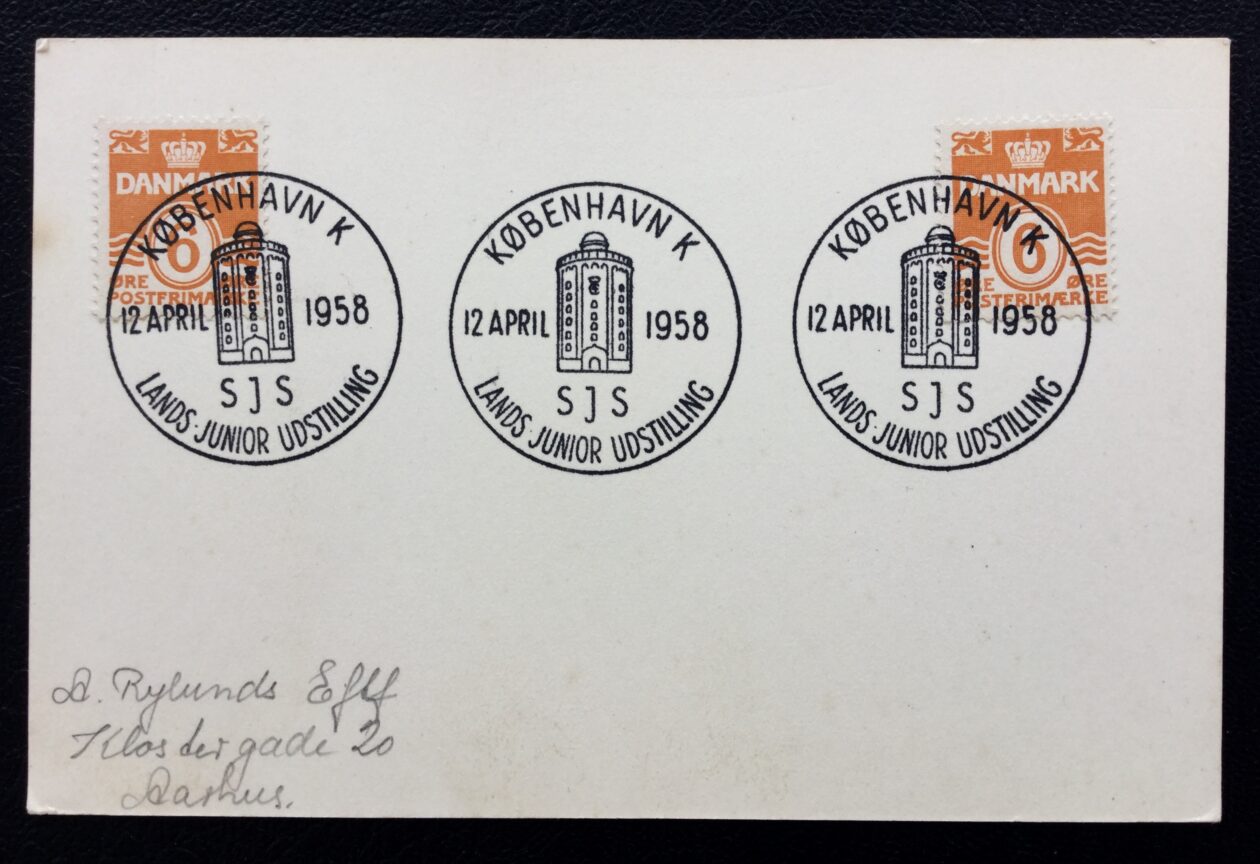
The 14th Stamp
Still, this does not mean that the Round Tower is nowhere to be found on Danish stamps. Its towering structure has actually been portrayed several times. The first time was in 1942 when a violet commemorative stamp worth 10 øre was issued to mark the tower’s 300th anniversary.
The stamp is designed by Viggo Bang (1885-1967) who is behind nearly a hundred Danish stamps and is thus among the nation’s most prolific stamp artists. The Round Tower stamp alone has gained him a wide distribution, since 179,851 sheets were made with it, each sheet consisting of 50 stamps, which makes well over eight million single copies.
On some of these copies small variations occur. The best-known variation is a small line to the right of the tower, which appears on the 14th stamp of the sheet in some parts of the print run, and which has been named, in a not entirely political correct term, “the Round Tower bomb”. Incidentally, the size of the line roughly corresponds to the one figuring on Christian IV’s forehead on some of the stamps that were issued in a set of four in 1924 to mark the 300th anniversary of the postal service.
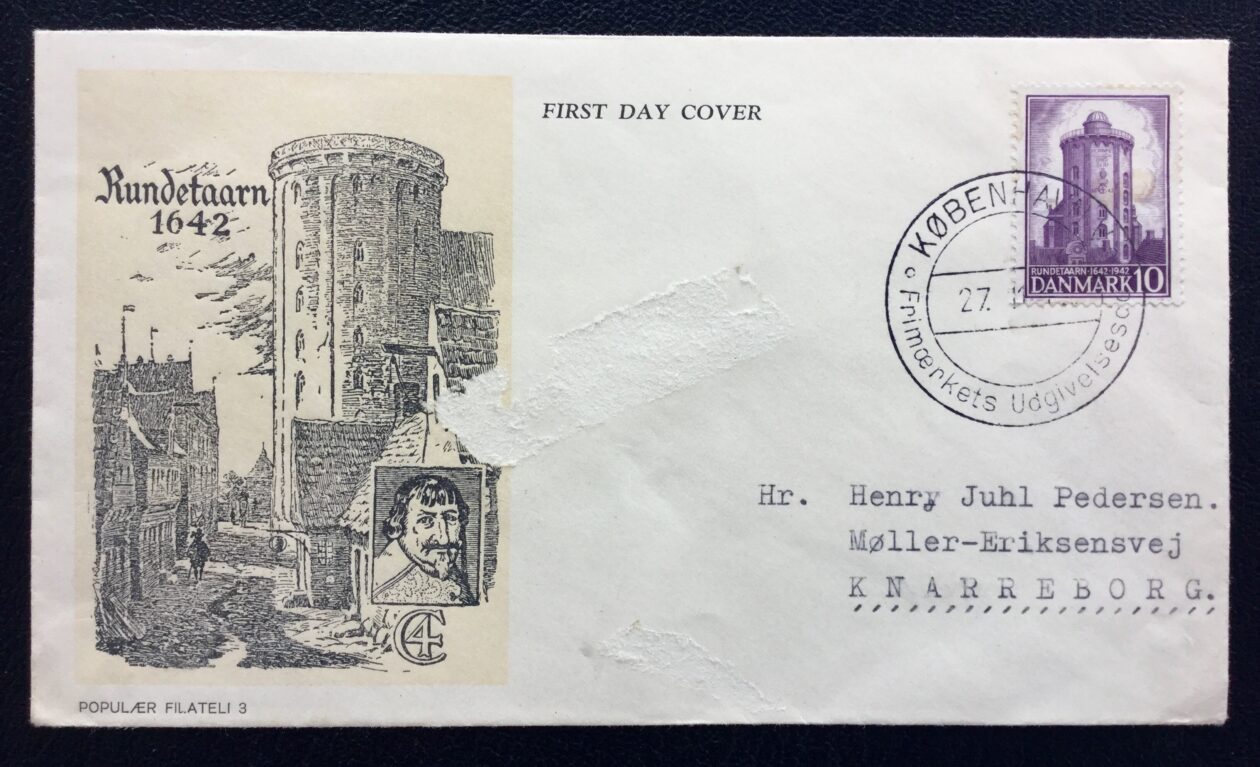
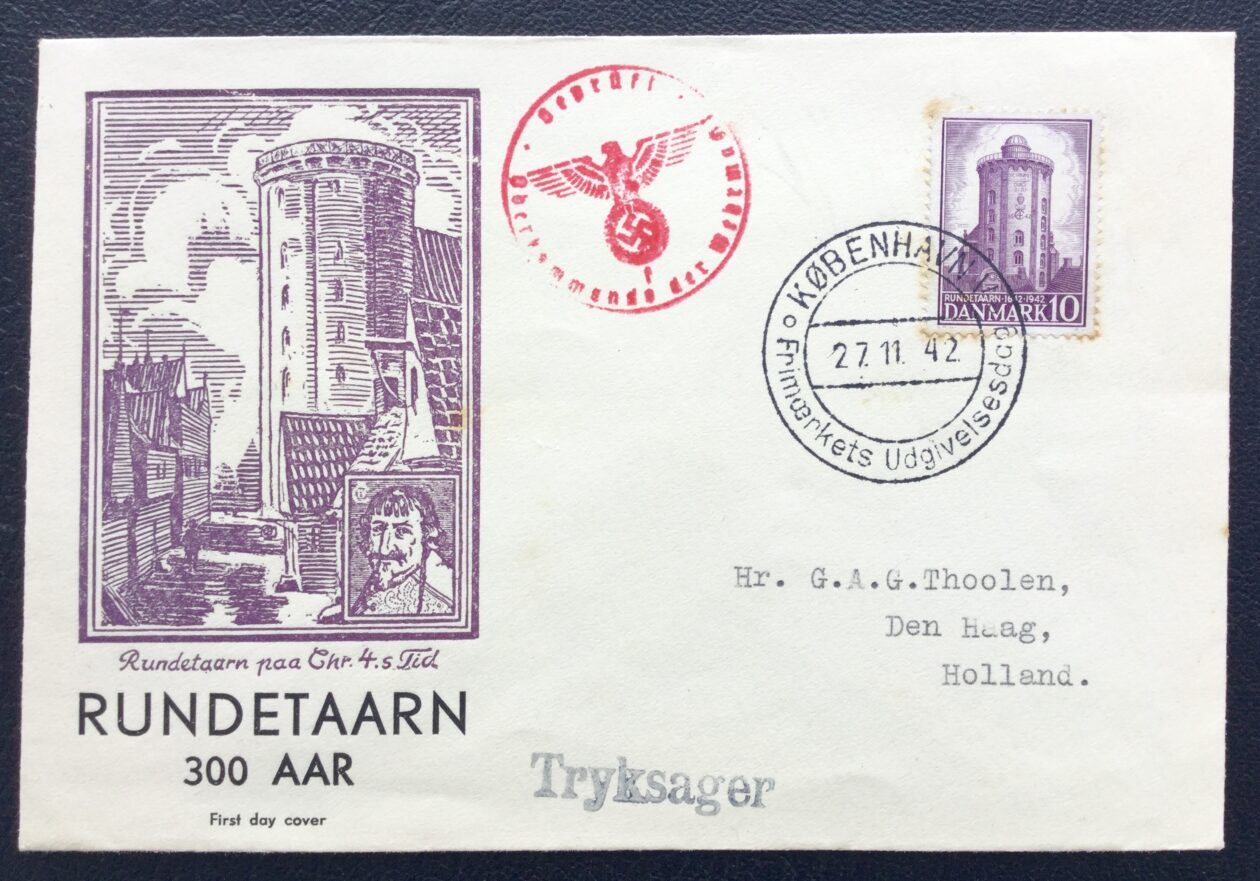
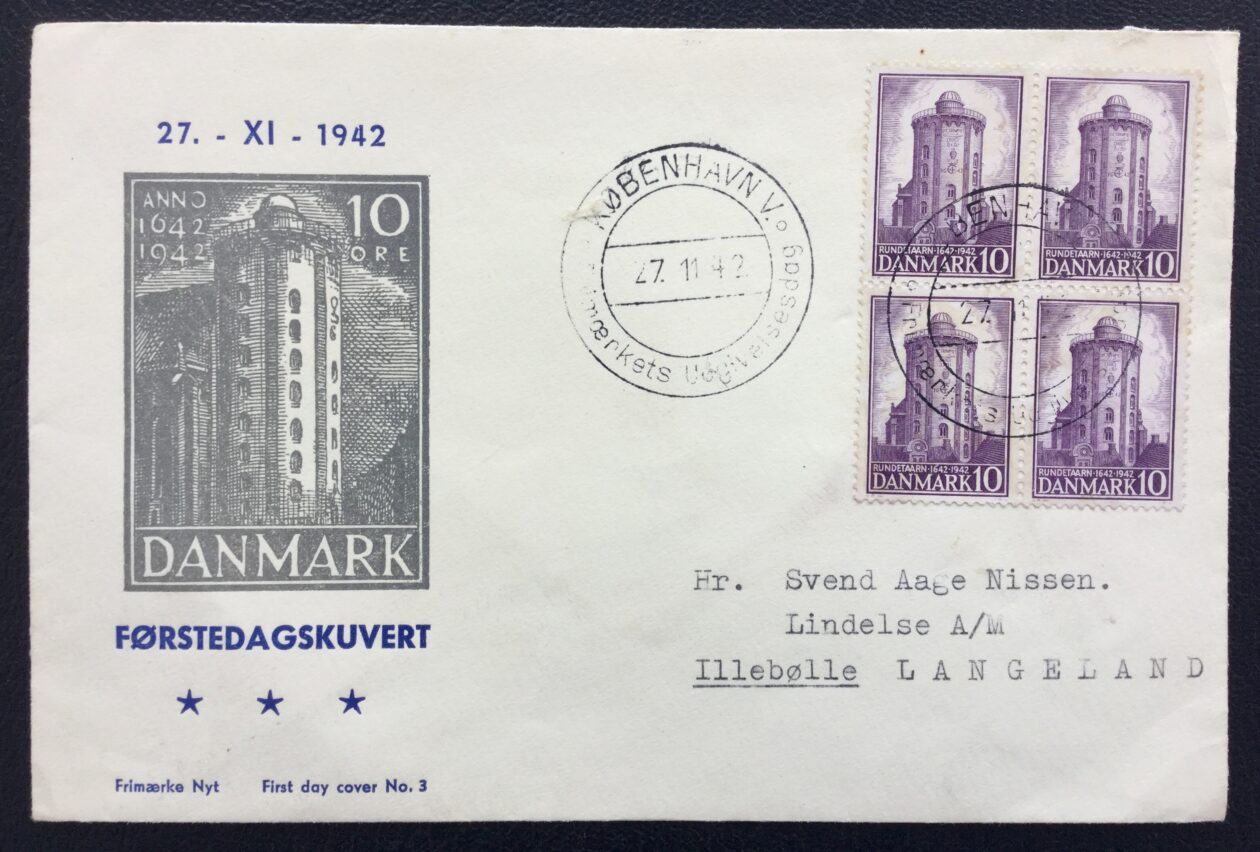
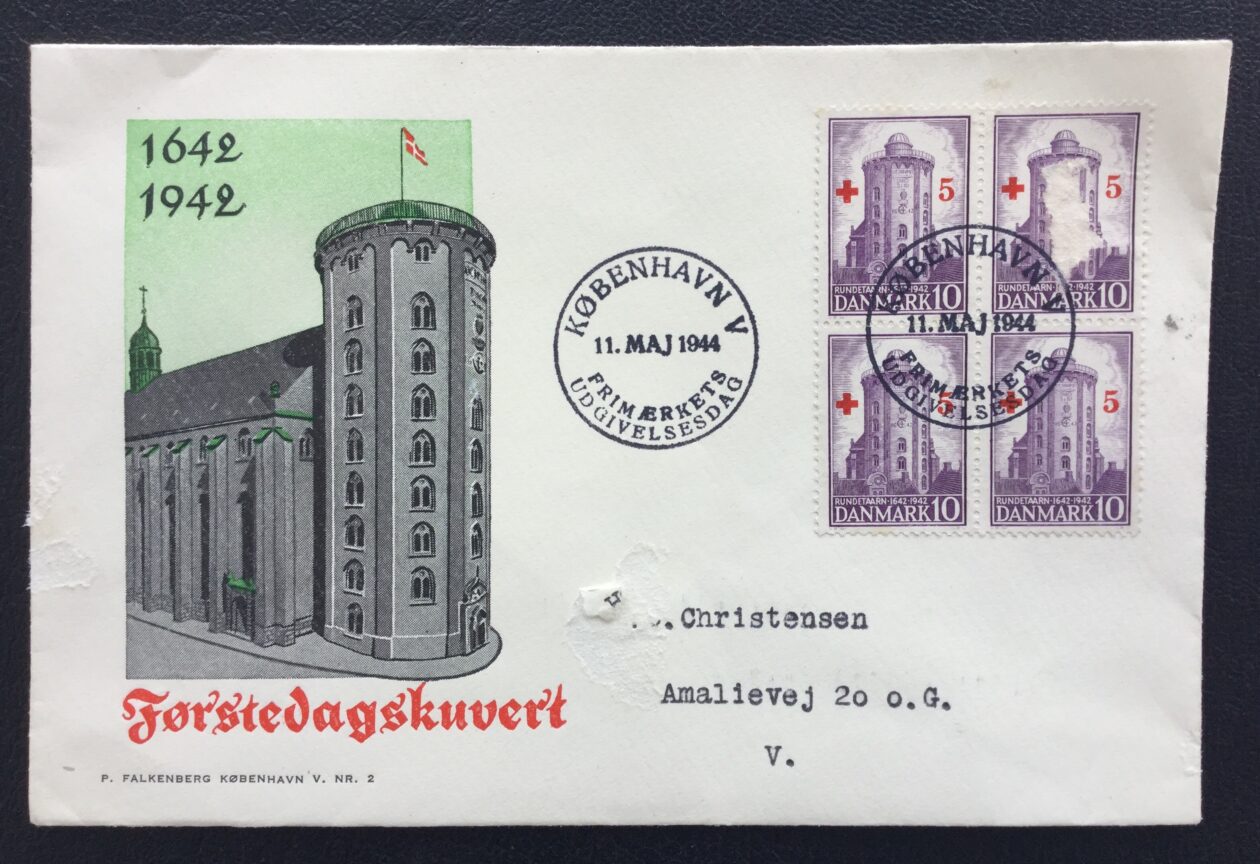
A Profitable Combination
Philatelists long for rarities and an even rarer variation does occur. Two years after the Round Tower stamp was published, the figure 5 in red was officially added on it as well as a red cross, which can be interpreted both as plus sign and as a Red Cross symbol.
At that time it was not unusual to do prints on already existing stamps, for instance, to indicate that the additional value imprinted on the stamp was for charity. This is how Denmark’s first charity stamp was made in 1921, which was also for the benefit of the Red Cross, and it was what happened again in 1944. But the combination of the additional print and the bomb at the poor tower is rare and therefore quite lucrative.
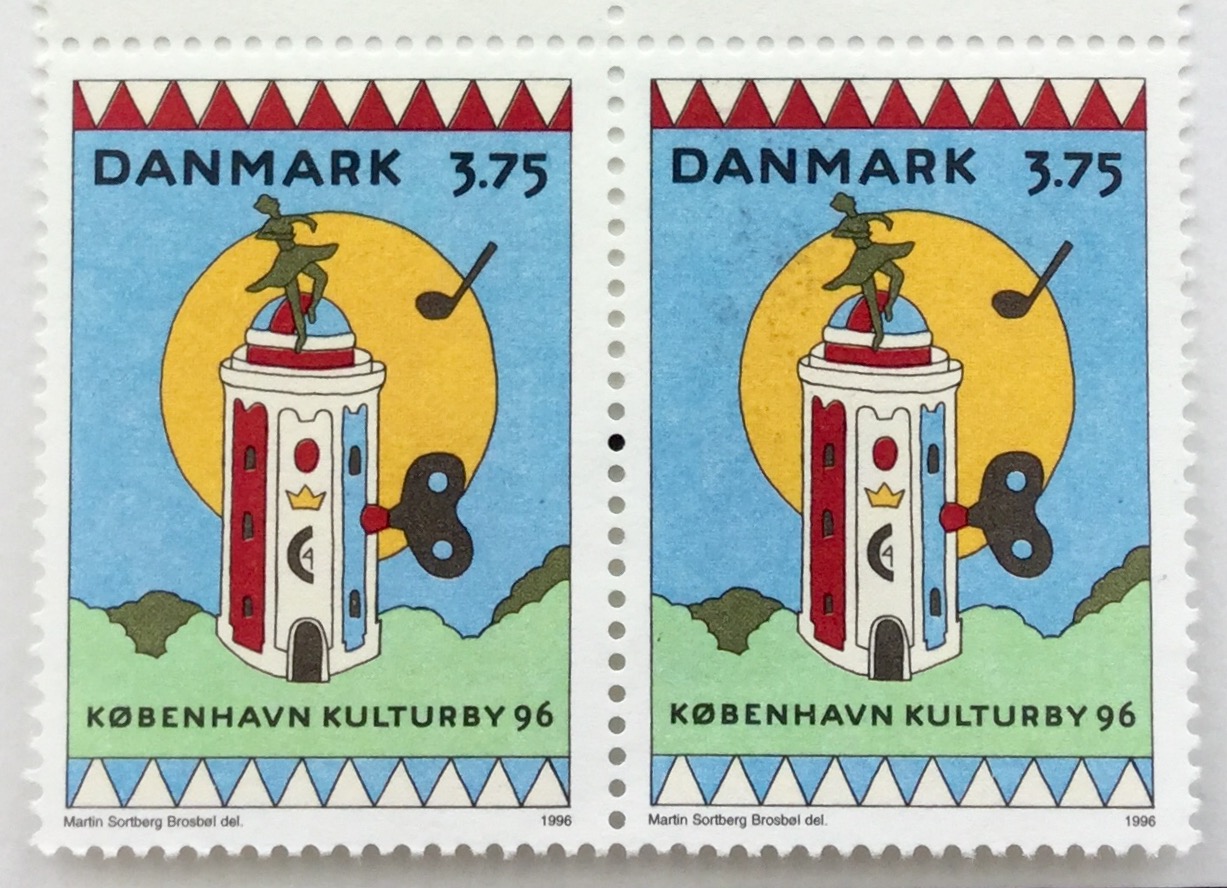
Changing Postal Rates
The succeeding stamps showing the Round Tower do not enjoy the same wealth of variation and the subsequent chance to be rare. A reddish brown charity stamp, which depicts two Greenlandic boys in the Spiral Ramp, was printed in 1968. This stamp was issued for the benefit of child welfare in Greenland, and was incidentally distributed at the same time as a similar Greenlandic stamp. In 1996 the Round Tower had the opportunity to act as a magical music box in a series of four commemorative stamps, which were issued on the occasion of Copenhagen being the European Capital of Culture for that year. And in 2009, the tower was turned into a lighthouse on one of two stamps that had astronomy as a theme.
On all these stamps one can follow the changing times and the equally changing postal rates. Quite a big leap thus occurs from the initial cost of 10 øre in 1942 to the value of the last stamp, which has multiplied to 5 crowns and 50 øre.
But there have also been stamps without denomination. In the Round Tower’s collection, for instance, one can find a postcard from 1943 that was written in Tivoli for “Liebe Mutti” (“Dear mother”). Here, the stamp simply has the words “the Round Tower” written on it while the portrait of Christian IV can be seen with the contour of the tower in the background. It might be home-made. In any case, it is even rarer than the most impeccable Round Tower bomb.
